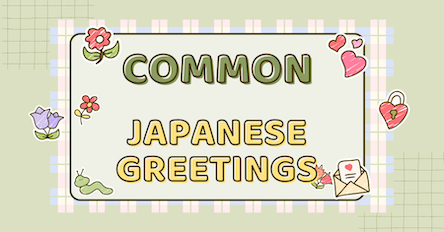Prepositions play a crucial role in structuring sentences, helping you communicate locations, directions, and relationships between objects or people. However, in Japanese, prepositions are often expressed through particles, which function slightly differently compared to English. In this guide, we’ll break down the most common Japanese prepositions (particles), how they work, and provide practical examples to help you use them confidently in conversation.
- What are prepositions in Japanese?
- Common Japanese prepositions
- Prepositions for Location and Direction
- Conclusion
What are prepositions in Japanese?
Unlike in English, where prepositions stand as separate words, Japanese prepositions are often expressed through particles (助詞 joshi). These particles attach to the end of nouns to show the relationship between elements in a sentence—such as location, direction, time, or ownership. While the function is similar to prepositions, the structure is quite different.
For instance:
- In English: “I am going to the park.”
- In Japanese: Koen ni ikimasu (公園に行きます).
Here, the particle に (ni) takes the place of “to.”
Now, let’s dive into the most common particles that function like prepositions.
Common Japanese prepositions (particles) and their usage
1. に (Ni) – To, At, In
The particle に (ni) is one of the most versatile particles in Japanese, used to indicate specific locations, destinations, and time. It can be thought of as equivalent to “to,” “at,” or “in” in English, depending on the context.
- Location (At/In):
学校にいます。(Gakkou ni imasu) – “I am at school.”
公園にいる。(Koen ni iru) – “I am in the park.” - Time:
午前10時に会いましょう。(Gozen juuji ni aimashou) – “Let’s meet at 10 a.m.”
日曜日に映画を見ました。(Nichiyoubi ni eiga o mimashita) – “I watched a movie on Sunday.” - Destination (To):
東京に行きます。(Toukyou ni ikimasu) – “I am going to Tokyo.”
友達の家に行きます。(Tomodachi no ie ni ikimasu) – “I am going to my friend’s house.”
2. で (De) – At, In, By
The particle で (de) indicates the location where an action takes place or the means by which something is done. It can be understood as “at,” “in,” or “by.”
- Action location (At/In):
図書館で勉強します。(Toshokan de benkyou shimasu) – “I study at the library.”
家でご飯を食べます。(Ie de gohan o tabemasu) – “I eat at home.” - Method/Means (By):
バスで学校へ行きます。(Basu de gakkou e ikimasu) – “I go to school by bus.”
日本語で話しましょう。(Nihongo de hanashimashou) – “Let’s speak in Japanese.”
3. へ (E) – Towards
へ (e) indicates direction or movement towards a certain place, similar to “towards” in English. While it is often interchangeable with に (ni) when indicating movement, へ emphasizes the direction rather than the destination.
- Direction:
学校へ行きます。(Gakkou e ikimasu) – “I’m heading towards school.”
山へ登ります。(Yama e noborimasu) – “I’m climbing towards the mountain.”
4. の (No) – Of, Belonging To
The particle の (no) is used to indicate possession or the relationship between two nouns, similar to the English “of” or “belonging to.”
- Possession:
これは私の本です。(Kore wa watashi no hon desu) – “This is my book.”
彼女の車は青いです。(Kanojo no kuruma wa aoi desu) – “Her car is blue.” - Noun relationships:
日本の文化 (Nihon no bunka) – “Japanese culture.”
駅の前 (Eki no mae) – “In front of the station.”
5. から (Kara) – From
The particle から (kara) is used to indicate the starting point of time, movement, or origin. It translates to “from” in English.
- Time:
午後5時から始まります。(Gogo goji kara hajimarimasu) – “It starts from 5 p.m.”
昨日から勉強しています。(Kinou kara benkyou shiteimasu) – “I have been studying since yesterday.” - Place (From):
日本から来ました。(Nihon kara kimashita) – “I came from Japan.”
駅から歩きます。(Eki kara arukimasu) – “I walk from the station.”
6. まで (Made) – Until, To
The particle まで (made) indicates the endpoint of time or place, similar to “until” or “to.” It is often paired with から (kara), which indicates the starting point.
- Time (Until):
午後6時まで働きます。(Gogo rokuji made hatarakimasu) – “I work until 6 p.m.”
夏休みまで勉強します。(Natsuyasumi made benkyou shimasu) – “I will study until summer vacation.” - Place (To):
学校まで歩きます。(Gakkou made arukimasu) – “I walk to school.”
駅まで走ります。(Eki made hashirimasu) – “I run to the station.”
Prepositions for Location and Direction in Japanese
In addition to particles like に (ni) and で (de), Japanese often uses nouns combined with particles to describe spatial relationships like “on,” “under,” “next to,” and “inside.” These nouns are typically paired with に (ni) or で (de) to indicate specific positions.
- 上 (Ue) – On, above:
テーブルの上にあります。(Teeburu no ue ni arimasu) – “It’s on the table.” - 下 (Shita) – Under, below:
机の下にいます。(Tsukue no shita ni imasu) – “I am under the desk.” - 前 (Mae) – In front of:
駅の前に立っています。(Eki no mae ni tatteimasu) – “I’m standing in front of the station.” - 後ろ (Ushiro) – Behind:
車の後ろにあります。(Kuruma no ushiro ni arimasu) – “It’s behind the car.” - 中 (Naka) – Inside:
箱の中に入っています。(Hako no naka ni haitteimasu) – “It’s inside the box.” - 隣 (Tonari) – Next to:
学校の隣にあります。(Gakkou no tonari ni arimasu) – “It’s next to the school.”
Learn Japanese with MochiKanji!
If you want to master particles like に, で, and へ with real-life examples, MochiKanji is the perfect app to help you practice and reinforce your skills. With its interactive flashcards and spaced repetition system, you’ll gain confidence in using Japanese particles effectively. Plus, MochiKanji offers tailored courses covering vocabulary from N5 to N2, giving you a comprehensive learning experience.
Conclusion
Mastering Japanese particles is crucial for building fluency and understanding how to express relationships between objects, people, and actions. By familiarizing yourself with common particles like に, で, へ, and others, you’ll be able to form more complex and meaningful sentences. Keep practicing, and over time, using these particles will become second nature!





